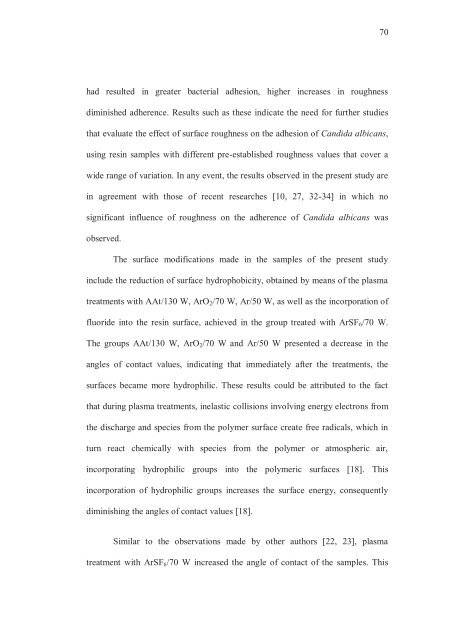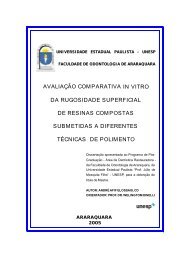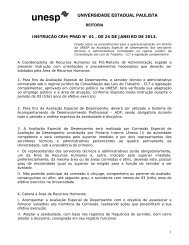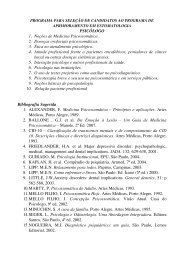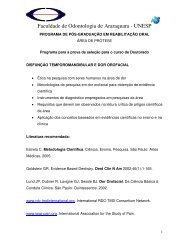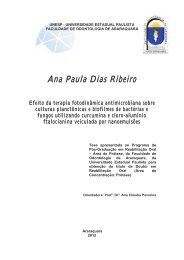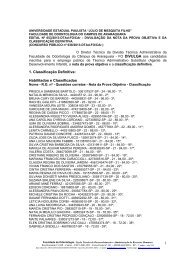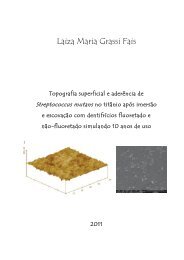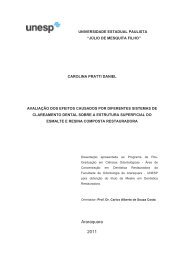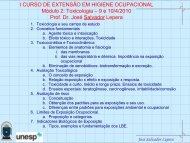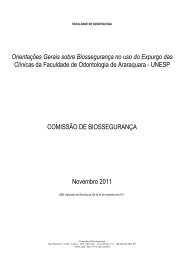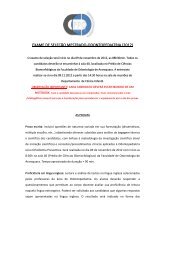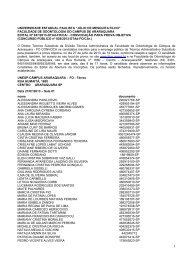universidade de são paulo - Faculdade de Odontologia - Unesp
universidade de são paulo - Faculdade de Odontologia - Unesp
universidade de são paulo - Faculdade de Odontologia - Unesp
Create successful ePaper yourself
Turn your PDF publications into a flip-book with our unique Google optimized e-Paper software.
70<br />
had resulted in greater bacterial adhesion, higher increases in roughness<br />
diminished adherence. Results such as these indicate the need for further studies<br />
that evaluate the effect of surface roughness on the adhesion of Candida albicans,<br />
using resin samples with different pre-established roughness values that cover a<br />
wi<strong>de</strong> range of variation. In any event, the results observed in the present study are<br />
in agreement with those of recent researches [10, 27, 32-34] in which no<br />
significant influence of roughness on the adherence of Candida albicans was<br />
observed.<br />
The surface modifications ma<strong>de</strong> in the samples of the present study<br />
inclu<strong>de</strong> the reduction of surface hydrophobicity, obtained by means of the plasma<br />
treatments with AAt/130 W, ArO 2 /70 W, Ar/50 W, as well as the incorporation of<br />
fluori<strong>de</strong> into the resin surface, achieved in the group treated with ArSF 6 /70 W.<br />
The groups AAt/130 W, ArO 2 /70 W and Ar/50 W presented a <strong>de</strong>crease in the<br />
angles of contact values, indicating that immediately after the treatments, the<br />
surfaces became more hydrophilic. These results could be attributed to the fact<br />
that during plasma treatments, inelastic collisions involving energy electrons from<br />
the discharge and species from the polymer surface create free radicals, which in<br />
turn react chemically with species from the polymer or atmospheric air,<br />
incorporating hydrophilic groups into the polymeric surfaces [18]. This<br />
incorporation of hydrophilic groups increases the surface energy, consequently<br />
diminishing the angles of contact values [18].<br />
Similar to the observations ma<strong>de</strong> by other authors [22, 23], plasma<br />
treatment with ArSF 6 /70 W increased the angle of contact of the samples. This


